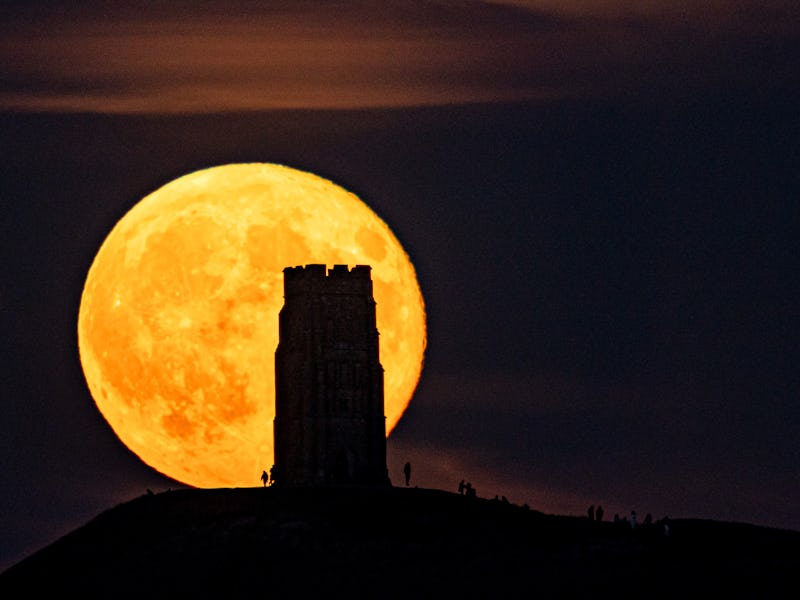Look Up! The Brightest Supermoon of 2024 Is Happening This Week — And It Comes With A Bonus Comet
This month's supermoon is the third in a row.

October's full Moon will be a supermoon flanked by a receding comet.
The Hunter's Moon rising this week is 2024's third supermoon in a row, which means the full Moon will look slightly bigger and brighter in the sky than usual. This supermoon will be the biggest and brightest of the series (and the whole year) because the Moon will reach its closest point to Earth on Wednesday morning, making it loom larger and shine brighter in the night sky. And unlike earlier supermoons, this one appears in the night sky opposite the fading streak of Comet C/2023 A3 Tsuchinshan-ATLAS, which is racing away from the inner Solar System as we speak.
Last month's Harvest supermoon appeared 30% brighter in the night sky. This one should be slightly brighter than that.
What's super about a supermoon?
A supermoon happens when the Moon is full while it's also much closer to Earth than usual, so it looks bigger and brighter than usual. The Moon's orbit around the Earth isn't a perfect circle with Earth at the exact center; instead, the Moon orbits us in a slightly squashed oval, and it's closer to Earth at one end of that oval than the other (we orbit the Sun in pretty much the same way). When the Moon happens to be at the closer end of the oval while it's also full, we get a supermoon. This year, that coincidence is happening four times in a row, with October being episode 3.
The difference between a supermoon and a regular full Moon is pretty subtle, and if you don't usually pay a lot of attention to what the Moon looks like overhead, you may not actually notice a difference. And while this month's supermoon is going to look ever-so-slightly wider and brighter than the last couple, that difference is even more subtle. It's not likely that you'll be able to spot the difference, but at least you can look up and know that you're seeing a neat coincidence of orbital mechanics.
If you want to catch the Moon looking especially stunning, look just after sunset, when the Moon is low in the sky. Because light has to pass through a thicker slice of atmosphere to reach us, when the Moon is at this angle, an optical illusion makes it look huge -- and dyes it Halloween orange.
How to See October's Full Supermoon and Comet
Technically, the Moon will be 100 percent full at 7:26 in the morning (Eastern time) on Thursday, October 17. But for anyone who's not writing an almanac, the Moon will look full enough to count from Tuesday evening through Friday morning.
If you're taking our advice and checking out the full supermoon just after sunset, it will be low over the eastern horizon. On the opposite side of the sky, especially if you're in a dark area and equipped with a telescope or a good set of binoculars, you may be able to catch a glimpse of Comet Tsuchinshan-ATLAS as it fades from view.
Why do we call October's full moon the Hunter's Moon?
October's full Moon is called the Hunter's Moon, because its appearance in the sky marks the time of year when the deer in the northeastern U.S. (home to the Indigenous people who created most of the full Moon names that are popular today) are fattened up for the winter — and very visible as they graze in recently-harvested fields. It's peak hunting season, in other words.
The Iroquois and Algonquian peoples also call this month's full Moon the Travel Moon, because this is a season in which both animals and people migrate. Birds fly south for the winter, and traditionally the Algonquian people who spent much of summer in the mountains move down to the warmer lowlands for the winter.